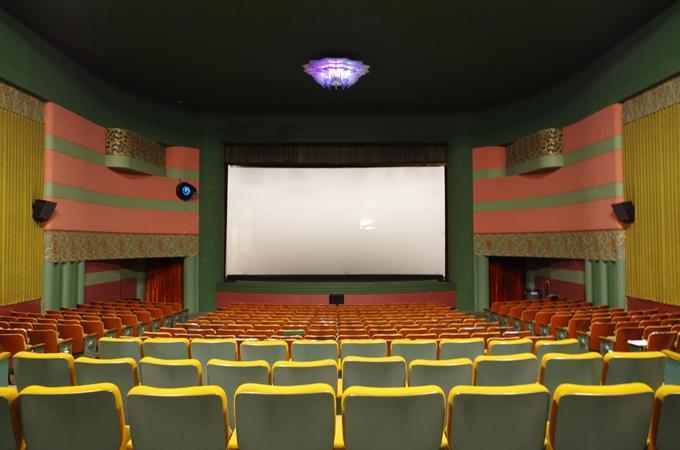Margaret Goodin Fritsch was the first woman to graduate from the University of Oregon’s School of Architecture, receiving her degree in 1923. Three years later, she was the first woman to be licensed as an architect in the State of Oregon. She continued in the field of architecture, eventually opening her own practice and later serving as a city planner in Alaska.
Mary Margaret Goodin was born in Salem on November 3, 1899. Her parents, Richard Bennet Goodin and Ella Emily Buck, traveled to Oregon from Ohio in an ox-drawn cart. Goodin’s mother had previously made the trek to Oregon with her first husband, returning to Ohio upon his death and then marrying Richard Goodin.
Goodin’s father believed women should be employed as nurses or teachers, so she enrolled in the University of Oregon as a pre-med student. After befriending several students in the School of Architecture, she expressed a desire to switch her major. Dean Ellis Lawrence encouraged her to pursue architecture. Though other women had attended the School of Architecture, Goodin was the first to graduate.
Although it was initially challenging to find work as a female architect, Goodin soon landed a position as draftswoman for the Portland firm Houghtaling and Dougan. She then worked as a draftswoman for Van Etten & Co. before establishing herself at the firm of Morris Whitehouse.
In 1926, Goodin became the secretary of the Oregon State Board of Architect Examiners, a position she held until 1956. In September 1928, she married architect Frederick Armbrust Fritsch. The two met when Fritsch taught a class at the University of Oregon. In 1929, the couple moved to Philadelphia and collaborated on their only joint project, the Tri-Delt Sorority House at the University of Pennsylvania. Fred Fritsch was quite ill at the time, and it would be his last project. The Fritschs returned to Portland in 1930.
Margaret Fritsch opened her own practice in 1933, which she maintained until 1940. Fred Fritsch died in October 1934, taking his own life after a long battle with illness. The following year, Margaret Fritsch was elected an associate member of the American Institute of Architects, one of six women affiliated with the organization at the time and the first woman elected in the West. She continued her own practice, working primarily on residential properties. She later commented that she felt little discrimination as a female architect in Oregon and thought that at times her gender aided in her success, as a woman would best understand the design of a home.
Fritsch followed no particular architectural style or school, but rather developed her plans by getting to know her clients, the building site, and how they wanted to live. She later commented that she did not produce the greatest architecture, but her clients were always satisfied. She designed primarily residential buildings and some sorority houses, including the Tri-Delta addition at the University of Oregon.
World War II altered Fritsch’s career. The field of architecture languished, and she went to work for the Portland Housing Authority, the largest housing authority in the nation. She did not regret giving up her architectural career, and believed that after the war the focus in architecture shifted from good design and craftsmanship to the use of mass-produced stock materials. For her, the fun and creativity she attributed to the field was gone.
Fritsch shifted her career path once again in 1957 when she became involved in city planning in Alaska. She served as city planner for Juneau and Douglas until 1959, before moving permanently to Alaska in 1963 as the planning director of a newly formed Greater Juneau Borough.
Fritsch retired in 1969 but continued to work on special projects for the borough. She died of pneumonia on June 27, 1993, in Juneau.
-
![]()
Cameo Theatre, interior, Newberg. Designed in 1936/37 by Margaret Goodin Frisch and Day W. Hilbron.
Courtesy University of Oregon Libraries
-
![]()
Cameo Theatre, built in 1936 in Newberg. Designed by Margaret Goodin Fritsch and Day W. Hilborn.
Courtesy University of Oregon Libraries
Related Entries
-
![Ebba Wicks Brown (1914–2006)]()
Ebba Wicks Brown (1914–2006)
Exposed to architectural practice from a young age, Ebba Wicks threw he…
-
![Ellis F. Lawrence (1879-1946)]()
Ellis F. Lawrence (1879-1946)
Portland architect Ellis Fuller Lawrence was the leading organizer of h…
-
![Housing Authority of Portland]()
Housing Authority of Portland
The Housing Authority of Portland was created in 1941 in response to th…
-
![Morris Whitehouse (1878-1944)]()
Morris Whitehouse (1878-1944)
Over the course of his career, Morris Whitehouse designed many importan…
Map This on the Oregon History WayFinder
The Oregon History Wayfinder is an interactive map that identifies significant places, people, and events in Oregon history.
Further Reading
Murray, Leslie. “Margaret Fritsch: Juneau's first planner had design for the future.” Juneau Empire, Sept. 25, 1985.
Ritz, Richard. “Fritsch, Mary Margaret Goodin.” Architects of Oregon: A Biographic Dictionary of Architects Deceased – 19th and 20th Centuries. Portland, Ore.: Lair Hill Publishing, 2002.






